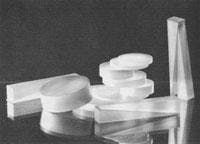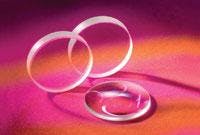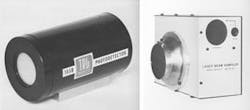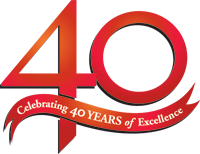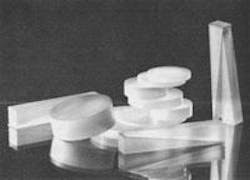
We’ve all heard that necessity is the mother of invention. Shortly after the advent of the laser, it became clear that a whole new range of optics, power supplies, detectors, shutters, attenuators, modulators, and other “peripherals” would be needed to enable laser use in a growing number of applications.
In the May 15, 1965, edition of Laser Focus magazine, for example, the “Peripheral Equipment” section described a “variable attenuator for optical research,” claimed by its manufacturer JEOLCO USA (a subsidiary of Japan Electron Optics Lab, then in Medford, MA) to be the world’s only commercially available laser attenuator at the time. Incredibly, this one device-constructed from a series of Glan Thompson prism polarizers-has since expanded into myriads of fixed and variable attenuators made from all kinds of materials, in optomechanical and optoelectronic designs, to meet every conceivable laser-based application. According to an August 2005 study by ElectroniCast (San Mateo, CA), the global attenuator market reached more than $149 million in 2004, and was forecast to reach more than $694 million by 2009. The attenuator is just one of many laser peripherals featured in 1965 that has since evolved into an industry of its own.
Laser optics
The prisms for the JEOLCO laser attenuator fall into the category of laser optics-materials and structures that are used to modify or improve the output characteristics of a laser beam. The laser’s monochromatic nature and its ability to transmit at a variety of wavelengths represented new challenges for the optics designer. Generic silica sand glasses were no longer adequate to deliver and shape the complex radiation emitted by a laser-the designer now had to develop specialty glasses, doped and coated with a variety of materials, usually with demanding physical characteristics. And, as the range of wavelengths expanded beyond the popular ruby and neodymium lasers of the early 1960s, laser optics continued to evolve. As a testament to the complexity of today’s laser optics, individual companies often specialize in only one type, such as IR or UV optics.As their durability continues to improve, the application base for laser optics has expanded to cover the entire laser wavelength spectrum. In its 2005 report “Growing Markets for Laser Materials and Components” (RGB-179U), Business Communications Company (Norwalk, CT) reported that the North American market for laser materials and components (defined as laser crystals, gases and dyes, optical coatings, and optical substrates such as lenses, mirrors, and filters) was estimated at $1.2 billion in 2004 and is expected to reach $1.8 billion in 2009.
Laser test and measurement
Simultaneously with the invention of the laser and its associated optics came a host of required test and measurement equipment specifically designed to study laser output power distribution and beam shape, among many other parameters. But once again, scientists had to search for, or when necessary develop, new materials that were sensitive to the wavelength region of interest.To aid in the study of laser beams, the Jan. 15, 1965, Laser Focus Peripheral Equipment section featured several test methods, including a temperature-sensitive, cholesterol-compound liquid-crystal sensor that underwent a color change from red to green when illuminated with IR output from a laser, and a narrow-bandwidth p-n junction sensor made from III-V semiconductors, which “seem to be most suitable for the purpose,” according to Laser Focus’ editors. Other examples include a photodetector from TRG (Melville, NY) featured in the Sept. 1, 1965, Laser Focus that weighed 4 lb, and a laser-beam sampler from EG&G (Boston, MA) that could measure laser powers up to 10 GW (see Fig. 2).
Detectors that once weighed several pounds and occupied cubic centimeters of space are now routinely packaged as millimeter-size circuit-board components, or as micrometer-size pixels in larger sensor arrays.
A search on the GlobalSpec Web site (www.globalspec.com) showed 117 suppliers for photodiodes, 199 IR temperature sensor providers, 23 laser-beam analysis companies, and 33 laser-micrometer manufacturers-just a sample of the ever-expanding laser test-equipment industry.
Other notable laser peripherals
A common item that appeared in most of the early issues of Laser Focus was the xenon flashtube, used for pumping lasers and providing a 20,000-J pulse from a 150‑W power input. Although flashtubes continue to be manufactured for many applications, they have been largely replaced by laser diodes in pumping applications. In a March 2004 news release, ElectroniCast predicted that the global consumption of pump-laser-diode modules alone would reach $255 million by 2008.
Laser peripherals yet to come
One of the most notable omissions in the peripheral equipment category in the 1965 Laser Focus editions is fiberoptic communication products. The reason is obvious: low-loss optical fiber would not be invented until the early 1970s, and was only made practical for communications by the existence of the laser. The symbiotic relationship between the laser and optical fiber, as well as the more recent symbiosis between the laser and photonic crystals, for example, illustrate the explosion of innovation that occurs whenever something new is invented.
All scientists should be proud that the significance of their inventions often has implications that go far beyond the initial discovery, creating new industries, and spurring researchers to ask even more questions and probe even further. As Albert Einstein once said, “As a circle of light increases so does the circumference of darkness around it.”❏
Inside Laser Focus: October 1965
■ Another Gemini 5 laser experiment?
■ The laser as an industrial tool
■ Laser microwelding system handles production runs
■ Laser used in thermonuclear research interferometer
■ Laser microprobe analyzes art objects
■ Metal plasma tube ups ion laser power, life
■ Laser communications aided by new detector, modulator
■ More on 10-mile laser voice system
■ Plasma torch aids crystal growth
■ Holography-plate or film negatives?
■ Laser helps predetermine lunar terrain
■ Packaging with laser welding
■ A report on two chemical laser investigations
■ Observations on the tunnel injection laser
■ ‘Most powerful’ CW laser announced
■ Synthetic emerald holds promise as laser material
■ Hydrothermal crystal growing process under development

Gail Overton | Senior Editor (2004-2020)
Gail has more than 30 years of engineering, marketing, product management, and editorial experience in the photonics and optical communications industry. Before joining the staff at Laser Focus World in 2004, she held many product management and product marketing roles in the fiber-optics industry, most notably at Hughes (El Segundo, CA), GTE Labs (Waltham, MA), Corning (Corning, NY), Photon Kinetics (Beaverton, OR), and Newport Corporation (Irvine, CA). During her marketing career, Gail published articles in WDM Solutions and Sensors magazine and traveled internationally to conduct product and sales training. Gail received her BS degree in physics, with an emphasis in optics, from San Diego State University in San Diego, CA in May 1986.
